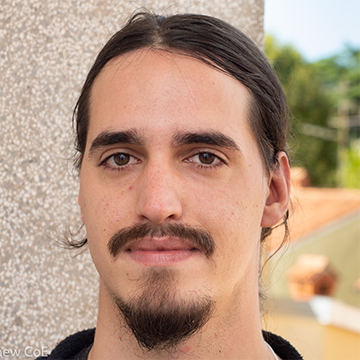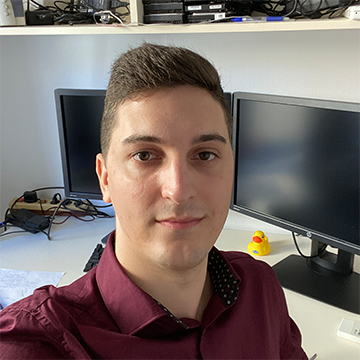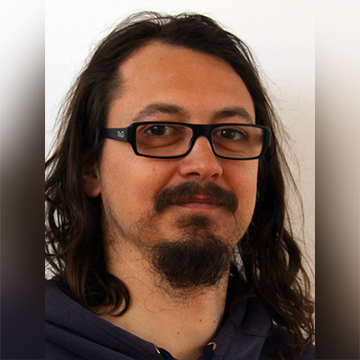Decentralized Cloud Infrastructure
Nion is a blockchain based cloud infrastructure for the future of Web3.
With a lightweight protocol it aims to build a decentralized and global network for IoT and Edge computing applications, optimising network's resource allocation in a transparent and verifiable way.

Features
Decentralized cloud
Community driven decentralized, and opensource cloud computing architecture for the Web3.
Developer oriented
Docker support enabling support for a variety of tech stacks, environments, and languages.
Transparent and verifiable
Onchain transparency and verifiability of running applications, migrations, and resource allocations.
Stake and Earn
Stake to run a node, and contribute computational underutilized computational power, and bandwidth. Earn rewards!
Deploy and run applications
Package your stateless applications in a docker image, and deploy instance on the network in a frictionless way.
Autonomous orchestration
Configure strategies for the decentralized orchestrator to take care of the life-cycle of your application.
Showcase
Testnet is up and running!
Dev-net deployments are monitored with the usage of a Grafana dashboard. Custom plugins were built to visualize the consensus, and networking layer.
The protocol is still under heavy development and dev-net deployments are expected to go offline and be redeployed on a regular basis.
A public view is available at:
Testnet dashboard
Articles & News
Medium Articles highlighting the core technology behind Nion.
News and medium articles
Stay Informed and Inspired: Explore the Latest News and Articles!
Year in review — 2022
by nion | 23. Jul 2023 | year in review, research, innovations
In the "Year in Review 2022" article, we delve into the Nion protocol's journey, a secure and scalable solution for decentralized infrastructure. Our dedicated team worked on key improvements, focusing on networking enhancements, verifiable delay functions, and efficient application migration using CRIU. As we set our sights on the future, we continue to push the horizons of decentralized technology through innovative research and development.
P2P Networking in NION
by aleksandar | 30. Aug 2021 | blockchain, p2p
Nion Network is introducing P2P networking capabilities to enhance its blockchain scalability. The traditional flood-based algorithm, though simple, can result in redundant network utilization and slow information dissemination. Nion Network is implementing a new algorithm that utilizes proof of stake and a binary tree structure for routing messages, resulting in faster and more secure transactions. This new feature also allows for increased privacy as nodes can transact directly without intermediaries. Join the Nion Network community to experience the future of decentralized finance with this innovative technology.
Nion Network — The Genesis
by nion | 20. Jul 2021 | genesis, blockchain
Nion Network is a revolutionary new blockchain platform that aims to address key issues in the decentralized space, including language heterogeneity, resource allocation, and verifiability. The platform utilizes a permissioned blockchain with a federated vote-based consensus mechanism, where nodes not only contribute to security and consensus but also share their resources by running containerized applications. The new version of Nion Network will be a permissionless network with Proof of Stake consensus mechanism, stateful container migration and fixed network parameters. Join the Nion Network community and be a part of a more efficient, decentralized world.
Research papers
Dive into the World of Innovation: Explore our Research Papers on Nion Network's Revolutionary Technology and Protocol
Run-time application migration using checkpoint/restore in userspace
Status: Pending peer review
A Blockchain Protocol for Real-Time Application Migration on the Edge
Publisher: MDPI (May 2023)
Visualization of consensus mechanisms in PoS based blockchain protocols
Publisher: Institute Jožef Štefan, University of Ljubljana (November 2022)
A Decentralized Authoritative Multiplayer Architecture for Games on the Edge
Publisher: Institute of Informatics, Slovak Academy of Science (November 2021)
A Blockchain-Based Decentralized Self-balancing Architecture for the Web of Things
Publisher: Springer (September 2019)
Roadmap
Nion is currently under heavy development. The current protocol implementation is tailored for a permissioned mode, and does not address byzantine behaviour. Protocol changes for a permissionless setting await a peer reviewed academic paper on the proposed changes.
Initial idea, research and prototyping
The idea of an autonomous and decentralized orchestration
Verifiable delay function-based consensus roles
First implementation, feasibility study
Java based implementation of the protocol
Testing feasibility, speed and responsiveness of container migrations
Reimplementation aiming for production quality codebase
Kotlin implementation, more stability and documentation
Better message queue implementation, added UDP based messages and improved block propagation
Skip block implementation to recover from faults
Permissioned version complete. Container migrations stable
Preparing an article for peer reviewed journal to validate the theoretical foundations of the protocol
Continuing research into CRIU for stateful container migrations
Optimization of attestation propagation using clustering techniques
Move to a permissionless protocol
Protocol reliability improvements for various hardware
Optimised node software for hosts, low resource footprint
Developed custom plugins for visualising network telemetry and debugging
Mainnet preparations
Published peer reviewed scientific paper of the main protocol
Implemented new gossip protocol using r-narry trees (pending peer review)
Major improvements on block times due to efficient propagation
Phase 1
Public testnet
Improved algorithm for migrations
Local database implementation for persistence
Client application for submitting containers
Node WebRTC needed for client application
Legal
Phase 1
Quorum for trusted computation
Parent image for user-defined containers
User guide to building images and deploying containers
Add network state and other telemetry to client application
Research on testnet performance
Phase 2
Implement added reliability via redundancy by adding new consensus roles
User configurable fault tolerance (redundancy factor)
Updates to client application to support redundancy
Research on economic model
Phase 3
User configurable orchestration algorithm
Client 2.0 with support of new features
Test persistence of low level sockets on migrating applications (CRIU)
Implementation of protocol level economics
Research towards game theoretical trusted computation
Phase 4
Begin work on DDNS implementation for better name resolution and routing
Work on improved network proxying for migrating application
Stability improvements
Support for native GPU computing and Keras
Study viability of enterprise version
Geo-sharding
Geo-fencing






